A vote of no confidence, also variously called a motion of no confidence, no-confidence motion, motion of confidence, or vote of confidence, is a statement or vote about whether a person in a position of responsibility like in government or management is still deemed fit to hold that position, such as because they are inadequate in some aspect, fail to carry out their obligations, or make decisions that other members feel to be detrimental. The parliamentary motion demonstrates to the head of government that the elected parliament either has or no longer has confidence in one or more members of the appointed government. In some countries, a no-confidence motion being passed against an individual minister requires the minister to resign. In most cases, if the minister in question is the premier, all other ministers must also resign.

Michel Naim Aoun is a Lebanese politician and former military general who served as the President of Lebanon from 31 October 2016 until 30 October 2022.

Hasan Saka was a Turkish politician, minister of foreign affairs, and prime minister of Turkey.

Abdolhossein Hazhir was an Iranian politician who served as the Prime Minister of Iran under Mohammad Reza Pahlavi in 1948, having been a minister 10 times. One of his posts was the minister of finance.
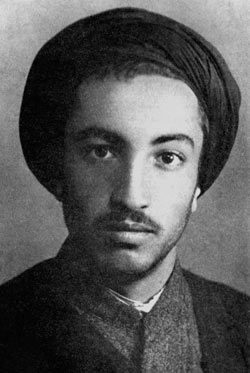
Sayyid Mojtaba Mir-Lohi, more commonly known as Navvab Safavi, was an Iranian Shia cleric and founder of the Fada'iyan-e Islam group. He played a role in assassinations of Abdolhossein Hazhir, Haj Ali Razmara and Ahmad Kasravi. On 22 November 1955, after an unsuccessful attempt to assassinate Hosein Ala', Navvab Safavi and some of his followers were arrested. In January 1956, Safavi and three other members of Fada'iyan-e Islam were sentenced to death and executed.
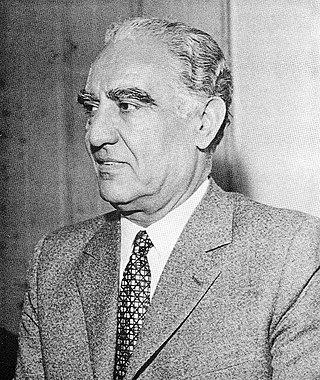
Manouchehr Eghbal was an Iranian physician and royalist politician. He was the Prime Minister of Iran from 1957 to 1960.

Fadā'iyān-e Islam is a Shia fundamentalist group in Iran with a strong activist political and terrorist orientation. The group was founded in 1946, and registered as a political party in 1989. It was founded by a theology student nicknamed Navvab Safavi. Safavi sought to purify Islam in Iran by ridding it of 'corrupting individuals' by means of carefully planned assassinations of certain leading intellectual and political figures.

The Cabinet of Iran is a formal body composed of government officials, ministers, chosen and led by a President. Its composition must be approved by a vote in the Parliament. According to the Constitution of the Islamic Republic of Iran, the President may dismiss members of the cabinet, but must do so in writing, and new appointees must again be approved by the Parliament. The cabinet meets weekly on Saturdays in Tehran. There may be additional meetings if circumstances require it. The president chairs the meetings. The Supreme Leader has the power to dismiss cabinet members like ministers and vice presidents, as well as the President, at any time, regardless of the Parliament's decisions.

Parliamentary elections were held in Iran in 1950.
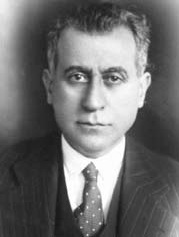
The 17th government of Turkey was a short-term government in the history of Turkey. It is also known as the second Saka government.

Musa Nuri Esfandiari was an Iranian diplomat and served as foreign minister and as ambassador during the Pahlavi era. On 15 June 1948 he was appointed minister of foreign affairs to the cabinet led by Prime Minister Abdolhossein Hazhir. He was in office until November that year.
Abdolhossein Behnia, also Latinized as Abdul Husain Behnia, was an Iranian politician who served as minister of finance several times during the reign of Shah Mohammad Reza Pahlavi. He served in the cabinet of Prime Minister Ali Amini and then of Asadollah Alam in the early 1960s.
Javad Bushehri, also known as Amir Homayun, was an Iranian businessman and statesman who held several government posts. In addition, he served at the Majlis and Senate and also, was the governor of the Fars province.
Jahangir Tafazzoli (1914–1990) was an Iranian journalist and government official during the Pahlavi period. He held various official posts and established a newspaper entitled Iran-e Ma. He committed suicide on 20 December 1990.

The cabinet led by Haj Ali Razmara was formed on 26 June 1950 and succeeded the cabinet led by Ali Mansur who was in office between April and June 1950. Razmara was a lieutenant general at the imperial army and was serving as the chief of the general staff when he was appointed by the Shah Mohammad Reza Pahlavi as the prime minister. It was the 33rd and first military cabinet in Iran since 1924. Behrooz Moazami also argues that it was one of the cabinets which did not follow the political agenda of the Shah in addition to the cabinets of Mohammad Mosaddegh and those of Ahmad Qavam in the Pahlavi rule. The Razmara cabinet ended on 11 March 1951 three days after the assassination of the prime minister.
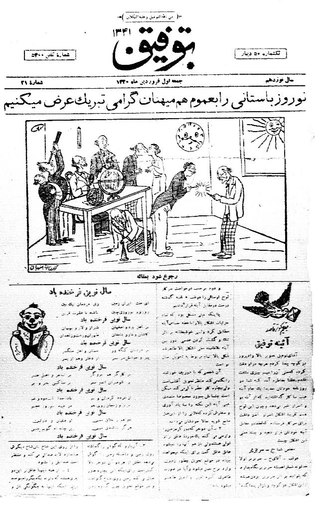
Tawfiq, also known as Towfiq, was a weekly satirical magazine which was published between 1923 and 1971 in Tehran, with some interruptions. It was among the critics of the Pahlavi rule in Iran.
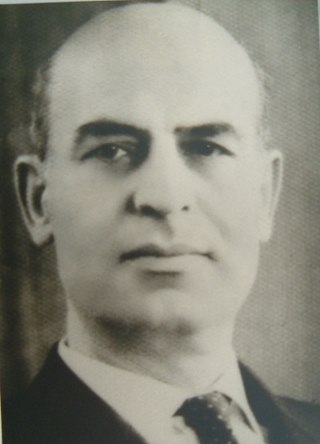
Javad Sadr was an Iranian diplomat and politician who held various public and cabinet posts. He was one of the Iranian ambassadors to Japan. He was the minister of interior and minister of justice in the 1960s.
The cabinet led by Hossein Ala' was formed on 20 March 1951 two weeks after the assassination of Prime Minister Haj Ali Razmara. The cabinet was given vote of confidence at the Majlis on 17 April 1951. However, the tenure of the cabinet was very short and lasted only until 27 April when Hossein Ala' resigned from office due to threats of the Fada'iyan-e Islam members who had murdered Haj Ali Razmara. Another reason for the resignation of the cabinet was the ratification of the oil nationalization bill. It was succeeded by the cabinet formed by Mohammad Mosaddegh in late April.
Fakhreddin Shadman, also known as Fakhreddin Shadman Valari, (1907–1967) was one of the leading scholars, writers and statesmen in the Pahlavi Iran. He was a faculty member at the University of Tehran. He also held various cabinet posts in 1948 and in 1953–1954.













